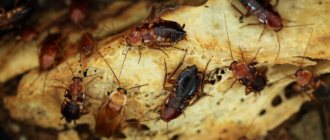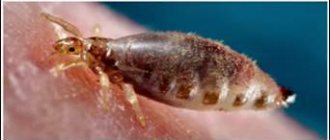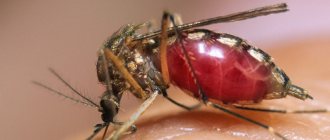Distribution area and habitat of the hedgehog
Hedgehogs are distributed unusually widely throughout the entire territory of our planet.
These unusual animals live in Europe, across a vast territory of Russia, Asia, New Zealand and even Africa. For its life, the hedgehog usually chooses forests, copses, plains with grassy vegetation, steppes, floodplains, near water bodies, and is also found in deserts. He avoids settling only in swampy areas, as well as in coniferous forests. Very often, hedgehogs can be found near human habitats.
Appearance of a hedgehog
The appearance of the hedgehog is very familiar to us all. This is a small animal, up to 30 centimeters long and weighing up to 800 grams. The upper part of the hedgehog's body is densely covered with spines. These are needles up to 3 centimeters long, hollow inside. The hedgehog has a huge number of needles, reaching up to 5 thousand pieces! The needles grow at different angles, forming an impenetrable, thorny mass that poses a serious threat to enemies.
South African hedgehog
The hedgehog's muzzle is elongated, with movable beady eyes, with a wet, movable nose, covered, like the lower part of the body, with dark gray fur. The hedgehog's teeth are strong, the front incisors are more like fangs. The number of teeth reaches 40 pieces.
Ears may vary in size depending on the type of hedgehog. The hedgehog has a tail, but it is small, no more than 3 centimeters, almost invisible from under its prickly fur coat. The hedgehog's legs are short, but the front legs are longer than the back legs. The long toes end in strong claws. With the help of these fingers, the hedgehog cleans its clothing where it can reach.
Ethiopian hedgehog
The hedgehog's vision is not developed, but its hearing and sense of smell are almost perfect. The sounds made by the hedgehog are unusual, reminiscent of snorting and sniffling. The speed at which the hedgehog moves is low, only 3-4 km/hour. The hedgehog's needles change regularly, but they do not change all at once; only a portion of the needles change over the course of a year, so the hedgehog's protective cover is not broken.
long eared hedgehog
Scientists have found that the hedgehog's brain has no convolutions at all. Both hemispheres of the brain are completely smooth. This means that hedgehogs are dumber than mice.
But at the same time, the hedgehog is easily tamed and, with some training, is capable of performing simple tricks.
Extraordinary hedgehog
So, I’m starting a story about useful “wit”. There are about 2 dozen species of hedgehogs. In this article we will look at the habits of the common hedgehog
(from the genus of Eurasian hedgehogs), because it is he who inhabits the territory of Europe, China, Kazakhstan, Western Siberia (up to its northern borders). I note that his more exotic brothers in the family also have a “residence permit” in southern, equatorial countries. So even a baby can answer the question of where hedgehogs live. But we need to talk about his “small” homeland.
It prefers to live in dry or moderately humid areas. Deciduous, mixed and not too dense coniferous forests are his home. And living in a copse, forest edge, or forest clearing is doubly pleasant. Therefore, if there are such natural objects next to the eco-garden, then hurry up and invite the hedgehogs to visit. Hedgehogs can be of great benefit in the garden, as they prefer to eat mainly insects and their larvae. And among the latter there are also many pests: caterpillars, wireworms. But that's not all.
Where do they live?
Hedgehogs are distributed throughout the African continent, inhabit almost all regions of Europe, and are found in Asia with the exception of the southeastern part of the continent.
Hedgehogs are not found in America or on the Australian continent.
Where live
Hedgehogs prefer to settle in savannas and steppes covered with dense vegetation, in forests, where they choose partially open places: edges, clearings, clearings. You can also meet hedgehogs near rivers or lakes.
Hedgehogs avoid wetlands, too dense, impenetrable forests, deserts and foothills.
Hedgehogs and mice
The most common myth is that hedgehogs eat mice. They may have enjoyed eating mice, but they couldn’t keep up with them.
Children's books are full of pictures of hedgehogs carrying apples or other fruits and vegetables. This is also a myth. They are not able to curl up enough to impale a large object on themselves.
Hedgehogs are very well and quickly tamed. In addition, they get along with pets. For example: dogs and cats. People are reluctant to have hedgehogs at home. After all, they stomp heavily, especially at night.
Interestingly, scientists have proven it. That both hemispheres of a hedgehog's brain are smooth. They are very stupid, but they quickly learn to follow simple commands and even a hedgehog can be trained to use the tray. But hedgehogs always choose a place for a toilet on their own. Only then will people need to put a tray in that place.
An interesting story about the death of hundreds of hedgehogs. McDonald's was the culprit. They made McFest ice cream in wide-necked cups. Hedgehogs could easily stick their heads into the glass, but they couldn’t stick their heads out. Thus, the hedgehogs died of starvation. After environmentalists took up this issue. Ice cream cups have been changed. They made wide necks and now the hedgehogs are safe.
The prickly truth about hedgehogs
Hedgehogs are a family of mammals from the order of insectivores. The hedgehog family (Erinaceidae) includes two dozen species living in Europe, Asia and Africa.
As a rule, hedgehogs fall on us out of the blue. Of course, there are people among us who have dreamed all their lives of having a hedgehog at home, and these people literally devote their lives to purposefully searching for hedgehogs in pet stores (where they are extremely rare), as well as at the Bird Market (where they are much more common, than we would like, because very often hedgehogs from Ptichka are sick with everything possible). Basically, hedgehogs are acquired this way: a person was walking along the road and suddenly sees a hedgehog lying on the road, hit by a car, beaten by dogs, or injured in some other way. Or the story unfolds in an even more tragic way: a man is walking through the forest and suddenly comes across a bunch of infant hedgehogs, who for some reason were left without parental care... Naturally, not a single normal person is able to pass by - and so at one moment each of we may suddenly become the owner of a common hedgehog, a classic inhabitant of our Moscow region, as, indeed, of most of the rest of Europe.
Actually, to the question “I caught a hedgehog, what should I do?” knowledgeable people respond categorically, “Let me go back immediately.” However, you cannot do this with a sick, injured or young hedgehog; it must first be repaired. Hedgehogs are not repaired everywhere - however, the same knowledgeable people highly recommend the Cobra clinic (https://cobravet.ru).
By the way, releasing hedgehogs into the wild has its own subtleties: the fact is that in their free life, our European hedgehogs are accustomed to hibernating in winter. And they will be able to survive hibernation only if they have managed to accumulate quite a lot of fat, which is not always the case with a newly recovered hedgehog. That is, if it happens somewhere in June, then you can release a completely thin hedgehog; it will still have time to eat; Well, if it’s towards autumn, then you’ll have to leave the little animal to spend the winter at your home. Well, as you know, at home it is usually quite warm, so there is absolutely no need for a hedgehog to fall asleep for the whole winter. There is no danger to his psyche in such winter insomnia; As for the condition of the hedgehog’s owners, that’s a completely different story.
The hedgehog is an undeniably fascinating creature. He has a touching, pointed nose and cute, sparkling eyes; he puffs funny, rumbles, snorts, stomps his funny paws; outwardly, it even looks somewhat similar to such a cute dog as a dwarf Spitz, which gives some people reason to expect from a hedgehog approximately the same behavior as from a Spitz or, at worst, from a guinea pig. Can't wait! In fact, hedgehogs as a pet can greatly disappoint someone who was hoping to get a nice, affectionate little animal that comes running when called and enjoys human company. Hedgehogs are proud loners and creatures, in general, completely self-sufficient. The hedgehog feels great in his own society, and by and large he does not need anyone from outside.
A hedgehog born from domestic parents may be a little kinder to people than a hedgehog found in the forest. In addition, a hedgehog born in captivity will at least be healthy - unlike its wild counterparts, which are chock-full of various parasites and covered in mites (all of which the hedgehog you plan to keep should definitely be rid of). Moreover, adorable hedgehogs can often give a person various unpleasant diseases, such as rabies. So a freshly caught hedgehog, even if it looks whole and healthy, in any case should be immediately shown to a doctor.
However, no matter how you treat the hedgehog, no matter how you please it, you most likely won’t get any gratitude from it: the maximum you can count on is that after some time in your house the hedgehog will get used to so close to you that when you approach, it will stop curling up into a prickly ball. The owner of the hedgehog cannot hope for more.
At the same time, hedgehogs are by no means some terribly stupid animals. They can even be trained - but, frankly, with such difficulty that the number of people around the world who have managed to get a hedgehog to perform all sorts of tricks can be counted on one hand: it seems that it is much easier to train a crocodile or something like that. However, if you don’t waste time and if the hedgehog happens to have a particularly flexible character, then it is possible that one day he will begin to trust you so much that he will sometimes sit on your lap while you scratch his tummy. However, we would not advise anyone to expect that every hedgehog will take such liberties.
What they need to know, they know - if, for example, a certain hedgehog accidentally finds out that in such and such a place a certain kind woman feeds stray cats every day at noon, then this hedgehog will begin to appear at the feeding place and sit quietly in the cat crowd, without quarreling with anyone and without fearing anyone. Hedgehogs living at home often get so used to the dogs and cats living next to them that they easily eat from the same bowl with them - not because they love their neighbors in the apartment so much, but simply because if the hedgehog is not touched, then it will no one cares. Unfortunately, some dogs sometimes mistake a hedgehog for a worthy hunting object. For this they can get a needle in the nose or a very sensitive bite. And hedgehogs bite very seriously - they cannot do otherwise, because in the wild they are constantly forced to engage in battle with such dangerous and powerful creatures as poisonous snakes. Moreover, hedgehogs are not exactly immune to snake venom, but have a very high resistance: one small hedgehog will survive an amount of snake venom that would kill about forty guinea pigs.
An apartment hedgehog should live in a cage, and in a fairly spacious one. That is, you can let him walk around the house - but only if you are ready to keep an eye on him: after all, he will not only try to tear the wallpaper or fight with the wires, he will also happily climb somewhere under the closet. And when you try to pick him out of there, he will, of course, curl up into a ball, so you will have to seriously rearrange the furniture - you won’t leave the hedgehog in his hiding place forever.
The rhythm of a hedgehog’s life does not quite coincide with the generally accepted human rhythm: hedgehogs usually sleep peacefully during the day, but they frolic more and more at night. The owner of a hedgehog must come to terms with the fact that there will no longer be silence in his house at night: a preoccupied hedgehog will tirelessly fuss, rustle, fuss and stomp - and the hedgehogs stomp much louder than would be expected from a creature weighing about a kilogram. In fact, if you don’t see the hedgehog, but only hear it, you get the impression that a medium-sized elephant is walking somewhere nearby.
Of course, watching the life of a hedgehog is a great pleasure. Not only does he look very cute, he is also very funny: he is looking for something with a concerned expression on his face, wandering around somewhere, puffing, snorting and generally living his rich inner life. However, many of those who rashly get a hedgehog, two weeks later they are already trying to give it to someone: it is not very convenient in everyday life, and there is practically no emotional return from it - the hedgehog is busy with itself and its thoughts, and it doesn’t care about everyone else. Therefore, getting a hedgehog should only be for those people who love not just animals, but hedgehogs. A person's love for a hedgehog is guaranteed to be unrequited, and therefore completely selfless.
Perhaps the hedgehog knows his name, but, as a rule, when he hears this name, he doesn’t even listen. Running to the master's call? No, that would also be completely un-hedgehog-like. Play with some stupid toys? This doesn't suit a real hedgehog either. The hedgehog lives well in his own society; in general, he doesn’t even need a friend of the opposite sex. Well, if someone turns up during the rut, good; Well, if not, then it’s not necessary.
The hedgehog needs a person only as a source of food. By the way, there are no particular problems with feeding hedgehogs. In nature, he eats almost everything that comes his way: berries, slugs, insects, frogs, small mice, chicks if they fall into his mouth. Of course, not every person is able to feed even their favorite hedgehog live mice - it is much more humane to replace them with minced meat or lean meat. Add fruit, maybe some insects, and pet stores sell vitamin supplements for hedgehogs, and sometimes even special branded hedgehog treats. On such a diet, and even under the supervision of a doctor, a hedgehog can easily live for six years, and if you’re lucky, even ten.
It is not profitable to breed hedgehogs professionally, so you can find this animal either in the forest, or on Ptichka, or among hedgehog lovers who have started breeding their prickly pets. And yet, before bringing a hedgehog into your home, soberly weigh the pros and cons again. After all, a not very good-natured animal will appear in your house, capable of biting, not very sociable, preferring a nocturnal lifestyle. So for those who are not fanatics of hedgehogs, who would simply like to get to know these funny misanthropes better, there is another way out: you can simply feed a hedgehog or two somewhere in the country. These country hedgehogs will remain free, but from time to time they will come to your lawn and expect all sorts of goodies from you. In return, they will eat all the nasty slugs from your cabbage, and also eliminate moles, shrews and mice. And if you have snakes on your property, then the fearless hedgehog will act as Riki-Tiki-Tavi, the winner of cobras. Hedgehogs in the garden are the only way to communicate with these little animals that is pleasant for both communicating parties.
By the way, the textbook picture of a hedgehog carrying apples, pears and other food on its needles has nothing in common with real life - only cartoon hedgehogs do this, and real hedgehogs have more important things to do.
Olga Volkova
How do hedgehogs eat vipers?
An interesting feature of these prickly animals is that their body is insensitive to snake venom. They are also not particularly worried about being bitten by a dangerous enemy, since vulnerable areas of the body are covered with densely planted spines.
Reference. It is believed that there are no snakes in the areas where hedgehogs live.
Defenseless snakes, as well as dangerous vipers capable of defending themselves, can become prey for hedgehogs. How does a hedgehog manage to catch a dangerous viper? When catching such prey, the hedgehog makes a lightning-fast bite of great force and immediately after that curls up into a ball. This tactic allows you to protect yourself from a dangerous retaliatory strike. Next, the animal repeats its trick and continues until the snake is completely weakened. Now the viper becomes easy prey for the hedgehog, which, by the way, is a dangerous and ruthless predator. If you have snakes in your dacha or garden, you should try to lure a hedgehog to your area.
Reference. Some people use a method of fighting snakes called the “drunken hedgehog” or “Hungarian way.” It is necessary to place beer or wine in small quantities on the site in saucers. A hedgehog that has taken to its chest will be mercilessly butchered by seven competitors on its territory.
Hedgehogs are carnivores by nature and are picky about their diet. They are ready to eat everything they manage to catch.
Signs that hedgehogs have taken up residence in your garden
The hedgehog who lives in your dacha also considers its territory his own. Here he has a place to build a nest and something to profit from. Hedges, compost pits, thickets of rosehip or chokeberry are very attractive to the hedgehog family.
How to determine that a hedgehog has appeared on a summer cottage?
There are several characteristic signs:
- Upside down, ruffled ground leaf litter. Hedgehogs like to rest in damp, dark places such as lying logs or compost piles. When setting up its nest, the hedgehog sorts through the dry wood in search of the necessary material. Therefore, a disturbed layer of foliage is the first sign.
- Changes inside the hedgehog's home. The appearance of an animal can be determined by the presence of traces of activity, for example, shifted and turned over leaves at its wintering site or in a house specially built for hedgehogs.
- Presence of litter. The hedgehog leaves excrement on the ground that is difficult to miss. Hedgehog droppings are similar in appearance to cat droppings, but more round in shape. Its appearance on the site clearly indicates that the hedgehog has begun its life activities.
- Recording from CCTV camera. Monitoring the house and territory using technical means will allow you to record everyone who appears on the site at night. It is advisable to set up the cameras so that you can see this small animal.
- Living hedgehogs with neighbors. An animal that settles in one summer cottage may well move to another. After all, hedgehogs travel at night and regularly cover distances of up to one and a half kilometers.
It is important that between neighboring areas there are fences and barriers that are safe for hedgehogs, so that animals can safely move in search of housing and food
Where do hedgehogs winter? How can a gardener help them sleep without anxiety?
Already from the subtitle it became clear that winter is the time of hedgehog hibernation. They look for unique nests for her, but do not engage in construction themselves. Heaps of dry leaves, low-pubescent branches or even secluded corners in lying building materials (boards, slate) - this is where these animals while away the winter. Naturally, their life will largely depend on the temperature outside and on the level of snow that has fallen (it is also an insulating material). To be sure that in the spring adults, and small hedgehogs with them, will again start running around the dacha plot at night, it is better to provide them with comfortable housing.
Knowing where hedgehogs spend the winter will simply help them. To do this, make a covered house from boards (simple, with a flat or sloping roof, approximately 50*40*30 in size), remember about ventilation and an accessible entrance. Place leaves, dry moss and other natural insulation materials in the house.
By the way, if it rains often, then strengthen the roof with clay or put some kind of covering material on it. Place this structure on the same piece of land (preferably even in a small depression) where hedgehogs live nearby. They will definitely like it. You will be confident that the animals are alive and well.
Such houses also provide a guarantee that cats or dogs will not accidentally stumble upon a sleeping hedgehog. They are unlikely to attack it (in the summer this can end very badly for pets), but they can destroy the nest in the harsh season.
And it is important to feed hedgehogs before hibernation so that they have more fat reserves. Do you remember what hedgehogs eat? You are unlikely to catch insects on purpose, but dry and wet food for cats and dogs is a good option. Don't forget to place a bowl of water and pieces of fruit nearby.
So, now you know what hedgehogs eat and, probably, many of you were simply amazed by their diet. And from the information about where hedgehogs live, it became clear that a well-equipped eco-garden is a treasured place for them.
I wish that such an interesting neighbor as the common hedgehog will settle in your garden as soon as possible.
I advise, dear readers, not to miss the publication of new materials on this blog.
Since childhood, we have been familiar with fairy tales and cartoons about hedgehogs, in which the main character stocks up on fruits and mushrooms for the winter. But this is just a made-up myth. In fact, hedgehogs never store supplies to survive the winter.
Both in nature and at home, they accumulate fat, starting in spring and ending in late autumn. To do this, hedgehogs need to eat a lot.
What does a hedgehog eat in nature and does it need to be fed?
Hedgehogs are wild animals. Their natural habitat is forest edges. Active life spans several months a year: from April to October. The rest of the time, the animals hibernate, not storing any food.
Hedgehogs are considered insectivores. They love slugs, snails, worms, cockroaches, beetles, and can destroy a nest and feast on bird eggs.
If a prickly animal finds wild wasps or bees in the ground, it will not be afraid of many of their insidious bites, despite its small weight.
It turns out that the animal is completely immune to even strong snake venom.
Hedgehogs also eat frogs or lizards in their diet. Some believe that hedgehogs are deft hunters of mice and snakes, but zoologists say this is a myth.
It would be more correct to say that hedgehogs find and destroy mouse nests, or engage in a fight with a snake if it attacks first.
Hedgehogs are also not averse to profiting from fallen berries or fruits, leaves or roots without any damage to garden plants and harvests.
A hedgehog that has settled in a dacha can be tamed. The experience of gardeners shows that after the first few contacts, the hedgehog stops releasing needles when meeting a person or when trying to pick him up.
Is it necessary to feed a forest hedgehog? Those who want the hedgehog to take root in the country and not go into the forest are advised to leave him some treats. Especially in early spring, when hibernation ends and hedgehogs, hungry over the winter, need food. And in the fall, when the animal is preparing for a long sleep and gaining weight.
Damianum/Pixabay
It is believed that if a hedgehog weighs less than 500 grams before hibernation, then it runs the risk of not surviving the winter.
How and what is the best way to feed a hedgehog? Considering that the hedgehog is active at night, treats should be left in the evening. To prevent him from emptying your pets' bowls, you need to have a separate flat bowl for the hedgehog.
Hedgehogs eat almost everything and do not refuse a treat.
The animals enjoy eating nuts and seeds; they love boiled potatoes, cereals, pasta and even raw meat. They crunch on dry pet food with great pleasure. But all food is healthy and safe for them.
Therefore, it is advisable to treat hedgehogs with what they eat in nature, and pour clean water instead of milk.
What to feed your pet hedgehog?
Most often he eats the same as his owner. But under no circumstances should you give foods that you eat yourself. Food from the table will kill the animal, and you yourself will not know why the hedgehog died so early. The best food for a domestic hedgehog is specialized food. But it is very difficult to get them in the CIS countries. The best option may be premium cat food, and then only in the first few days. Then you will have to create a special menu for the new tenant.
Products you can feed your hedgehog at home:
Make sure all food is fresh and at room temperature. Be sure to remove any remaining food in the cage so that the hedgehog does not eat spoiled food and get poisoned.
Foods that should not be given to hedgehogs:
- onion and garlic;
- various exotic fruits (all citrus fruits, pineapples, avocados, mangoes and others);
- dried fruits (due to poor traffic);
- grapes (possibility of choking on seeds);
- seeds and nuts (because they are very fatty and the hedgehog will get an upset stomach);
- fast food products;
- milk.
The legend that hedgehogs love milk is very common, but in fact, milk is detrimental for hedgehogs, since their body does not digest lactose. If a long-lived hedgehog lives from 5 to 6 years, then a hedgehog that drinks milk will not live even a year.
Hedgehogs are mammals that can live not only in natural conditions, but also next to humans. Some summer residents try to feed them, hoping that these prickly guests will protect their area from snakes and mice. Whether hedgehogs actually eat mice, you will find out in this article.
Livelihood of hedgehogs
Of the 19 species of hedgehogs found in nature, the common hedgehog mainly lives in our region. It can be found anywhere: in steppes and thickets near rivers, on grassy plains, in plantings and mixed forests. Animals do not settle only in coniferous forests and swampy areas. Hedgehogs do not mark territory, but stick to the boundaries of a specific area, which they regularly survey in the hunt for prey, and live one individual at a time.
The animal's body is covered with needles - keratinized hairs that perform a protective function. Studies have shown that an adult hedgehog has up to 6 thousand spines. The keratinizations perfectly protect hedgehogs from attacks by predators, but at the same time they contribute to the accumulation of ticks and other dangerous parasites on the animal’s body. Long fingers help the animal to independently get rid of insects stuck in the thorns, and the animal has adapted to “remove” those that it cannot reach with the help of fermented fruits, collecting them on its growths.
Hedgehogs are nocturnal animals, they cannot stand the heat; during the daytime they hide in heaps of leaves or cozy nests made of moss, grass and branches.
They build their homes under dry stumps and tree roots. The nests are small in size - about 20-25 cm. Hedgehogs hibernate for the winter, before which they feed heavily and carefully insulate their nests with dry leaves and moss. If fat reserves are insufficient, the animal may die.
In winter, their homes are covered with snow, and the animals sleep peacefully until the first warmth. All vital processes slow down, the number of pulse contractions decreases to 20-60 per minute, and body temperature drops. In April, as the ambient temperature rises and the snow melts, hedgehogs awaken and begin hunting.
About nutrition
Hedgehogs have lived on Earth for more than 15 million years.
Science knows 19 species of this animal. On the territory of our country, the most common hedgehog is found. The main feature of the inhabitant of forests and fields is a body covered with needles, the number of which in an adult individual can reach up to 6000 pieces. The small predator is practically an omnivore:
- the hedgehog hunts lizards and snakes, newborn hares and chicks;
- the animal’s menu includes various insects, worms, slugs, garden snails;
- The animal’s favorite delicacies include the eggs of gray partridge, black grouse or quail;
- The hedgehog also feeds on mice, preferring voles.
If we talk about mushrooms and berries, then the animals do not have much interest in them. They are also indifferent to apples. With the help of juicy berries and apples, the animal only tries to get rid of ticks, which quite often appear under a layer of thorns. The acid present in berry and fruit juice repels insects.
Food preferences
Hedgehogs are predators and belong to the class of mammals. In terms of nutrition, they do not neglect anything. These animals are almost omnivorous ; they can eat:
- beetles, earthworms, garden snails, slugs;
- frogs, snakes, lizards;
- mice, baby birds and hares;
- eggs of quail, black grouse or partridge.
Such gluttony and indiscriminate eating stems from the animal’s high activity and the need to create a fat reserve for the winter. The oral apparatus of hedgehogs is designed for processing food of any kind; in the mouth the animal has 20 upper and 16 lower teeth. In addition to animal food, animals also eat plant food (fruits and berries), only in much smaller quantities.
After emerging from suspended animation, hedgehogs are especially in need of nutrition, as their fat reserves are running low. During this period, the animal can eat up to a third of its own weight in feed overnight.
When kept at home, animals eat eggs, meat, and can consume small amounts of bread and porridge. Contrary to popular belief, it is not beneficial for hedgehogs to eat dairy products, since these animals have physiological lactose intolerance. The consequence of such nutrition can be severe digestive disorders.
People have learned to use the gluttony and eating habits of hedgehogs for their own purposes. These animals are natural enemies of rodents and many harmful insects, so they can be of great benefit by settling next to human habitation.
Do hedgehogs hunt mice? Animals are not as agile as cats, so in open areas it is difficult for them to catch a nimble rodent. The main source of food for hedgehogs is insects, but at the same time, hedgehogs bring certain benefits by destroying mouse nests and eating broods.
The very presence of prickly animals scares away mice and rats from human homes and outbuildings. At night, hedgehogs look for burrows of small rodents and patiently wait for them to appear before suddenly attacking the pest.
Enemies of hedgehogs in the wild
The hedgehog has many enemies in nature: foxes, wolves, snakes, ferrets, kites, martens, eagle owls, etc. When attacked by a predator, the hedgehog defends itself with a bunch of sharp needles in the frontal part, and if the forces are unequal, it curls up into an impregnable ball. The enemy, seeing that the thorny ball cannot be unrolled without injuring the paws and muzzle, gradually loses interest in the prey.
But some predators have quite developed intelligence and are able to come up with methods of fighting hedgehogs. It has long been noticed that a fox tries to throw a hedgehog into a pond, and, waiting until it is forced to turn around to swim, attacks. The eagle owl strives to silently and sharply “fall” from a height, not allowing the prey to come to its senses. Its clawed paws have hard scales that are not afraid of even the sharp spines of a hedgehog.
Snakes, not endowed with special intelligence, certainly play around in a fight with a hedgehog. He has his own tactics: grabbing the snake’s tail, he begins to curl up into a ball and gradually pulls it under him. Snake venom is not scary for hedgehogs. This amazing animal is not sensitive to many aggressive substances: biological fluids of ladybugs, caterpillars, bee venom and Spanish fly toxin. For other mammals, contact with these substances is fatal. It has been noted that even such highly toxic poisons as opium, hydrocyanic acid, sublimate and arsenic will not lead to the death of the animal, although it is sensitive to them.
Due to the large number of predators wanting to feast on the hedgehog, the animal’s life in the natural environment is short, only 3-5 years. In captivity, it can live 10-15 years, but it is believed that this animal is not suitable for keeping at home. At night he rustles, snorts and makes other various noises.
How do they winter
Hedgehogs that live in temperate climates hibernate during the cold season. Before leaving for the winter, they feed intensively, gaining fat. To survive the winter, an animal needs to accumulate up to 300-500 grams of body fat. 2-3 days before bedtime, the animal stops feeding in order to cleanse the intestines.
The time when hedgehogs hibernate depends on climatic conditions. This usually happens in October, when the air temperature drops below +10 degrees, and frosts occur at night.
The hedgehog sleeps until April. During hibernation, his body temperature drops to +1-2 degrees, and his pulse drops to 20-40 beats per minute.
The awakening occurs in April, but the animal is in no hurry to leave the hole, waiting until the air warms up enough.
Hedgehog or cat
Science has long known that hedgehogs eat mice. Evidence of such a hunt is provided by eyewitness accounts. Some people even believe that prickly animals cope with this task much better than other predators who eat mice, such as cats.
It's interesting how a hedgehog catches mice. After all, a frankly clumsy animal is not at all characterized by high speed of movement, flexibility, evasiveness and a quiet approach. In addition, while moving, the animal often snorts and rustles its spines.
Spiny Hunter
It’s worth noting right away that there are quite a lot of misconceptions that are associated with these animals, so let’s try to gradually sort them out.
Reference. Many people think that hedgehogs are kind and cute and don’t know how to bite. Agree that when you meet a hedgehog on your way, you will immediately try to touch it, but it seems so defenseless. In fact, he can quite realistically stand up for himself and will bite you quite painfully, and in addition he will infect you with some kind of infection. Hedgehogs, by the way, carry rabies.
So, is it true that hedgehogs are good at catching mice? For some reason, many people believe that this is true and actively try to lure the prickly hunter to their site so that the hedgehogs catch mice. But in fact, hedgehogs are not very good at catching mice.
Why are they not good at hunting small mice? The thing is that hedgehogs have club feet, and when walking they create quite a lot of noise. Despite the fact that the hedgehog runs quite quickly, it makes a lot of noise, so all the mice run away from it. Of course, if he manages to catch a mouse, he will enjoy it with pleasure. How do they manage to catch such a delicacy? Most likely, their prey was somehow sick, lame, or inattentive.
Hedgehogs can also act according to the following schemes:
- They look for mouse holes and stay near them until the mouse crawls out of its house. When the prey sticks its nose out of the hole, the hedgehog quickly grabs it by the neck with its sharp teeth, thereby inflicting a fatal bite.
- Hearing the rustle of mice moving, he hides in the grass. As soon as the prey comes closer to the hedgehog, it grabs it.
Important. There is no need to feed the hedgehog milk to your site. Of course, when he sees the treat left for him, he will drink it, but then he will feel unwell. Do not mock the animal, do not pour milk on it.
What misconceptions are associated with hedgehogs?
In nature, scientists have counted nineteen species of hedgehogs. There are seven species of them on the territory of the former USSR. The most common species is the common hedgehog. There are many misconceptions associated with these cute animals. I'll try to list a few.
For some reason, it is generally accepted that a hedgehog is better than a cat at catching mice. For this reason, they try to specially lure hedgehogs to their homes by pouring milk into a saucer. However, hedgehogs are very bad at catching mice in the wild. Why? Due to the fact that clubfoot makes a lot of noise when walking. Of course, the hedgehog runs well. But it creates even more noise here than when walking. What kind of mouse would wait for a hunting hedgehog? Only sick or too careless. These are the mice that hedgehogs sometimes encounter.
Attracting hedgehogs to your home is a barbaric practice. Although they are mammals and feed hedgehogs with milk, this does not mean that an adult hedgehog can also feed on it. The stomach of an adult hedgehog is not adapted to process milk well. A hungry hedgehog, of course, will drink milk from a saucer. What else can he eat while locked up at home? But drinking milk will result in an upset stomach for the hedgehog. If you do not seek help from a veterinarian, the outcome can be fatal for the animal.
Usually a hedgehog is drawn in a picture with an apple or a mushroom on its back. And here again there is a misconception. Hedgehogs don’t eat both. And there is no need for them to prick needles. But something else is known. Hedgehogs, in search of food, climb into places where many ticks “catch”. And since they are small, they easily slip between the needles and dig into the skin. To get rid of these parasites, hedgehogs spend a long time looking for forest apple trees. And having found them, they fall on their sides and rub against the rotting fruits. Some of them may get stuck on needles. But only from the side, and not at the very top of the back. Ticks do not like sour smells and partially leave hedgehogs.
If you are planning to “shelter” a hedgehog, be sure to remember about ticks. They can get into your house with this animal. If there is a risk of encephalitis in your area, then this dangerous disease can be transmitted to you from a tick bite and at home.
It is also a common misconception that hedgehogs do not bite. How they bite with their small and sharp teeth! Especially if you are angry. And with a bite, dangerous diseases can enter your bloodstream - encephalitis, rabies, helminthiasis.
And now about other misconceptions - more neutral ones.
Hedgehogs and porcupines are not related at all. Although both have needles. But hedgehogs and porcupines are “registered” in completely different “categories”. Porcupines are rodents.
Many people say with confidence that the hedgehog’s main enemy is the fox. She, seeing the hedgehog, tries to grab it by the lower abdomen, which is not protected by needles. Of course, the hedgehog quickly curls up into a ball of solid needles. What does the fox do next? She carefully begins to roll this ball with her nose to a puddle, river, lake and there she pushes it into the water. The hedgehog, in order not to choke, is forced to turn around from the ball and swim. And this is exactly what the fox needs from him: she immediately grabs him by the lower abdomen and bites him. But hedgehogs are well aware of this trick of the red-haired gossip, so they try to stay away from the water. It is very rare for a fox to feast on tender hedgehog meat.
But the eagle owl (night robber) grabs the hedgehog with its claws even through the needles. And since hedgehogs are also nocturnal hunters, they are caught by eagle owls in large numbers. But why don’t eagle owls get injured on needles? Their paws are covered with powerful “armor” - heavily keratinized skin. Having grabbed the hedgehog with its claws, the eagle owl tears it into pieces and tears out the meat with its beak.
Hedgehogs are loved; fairy tales and cartoons are dedicated to them. But do not forget that there are certain misconceptions associated with these cute, funny animals.
Tags: hedgehogs, misconceptions, animals, nature











